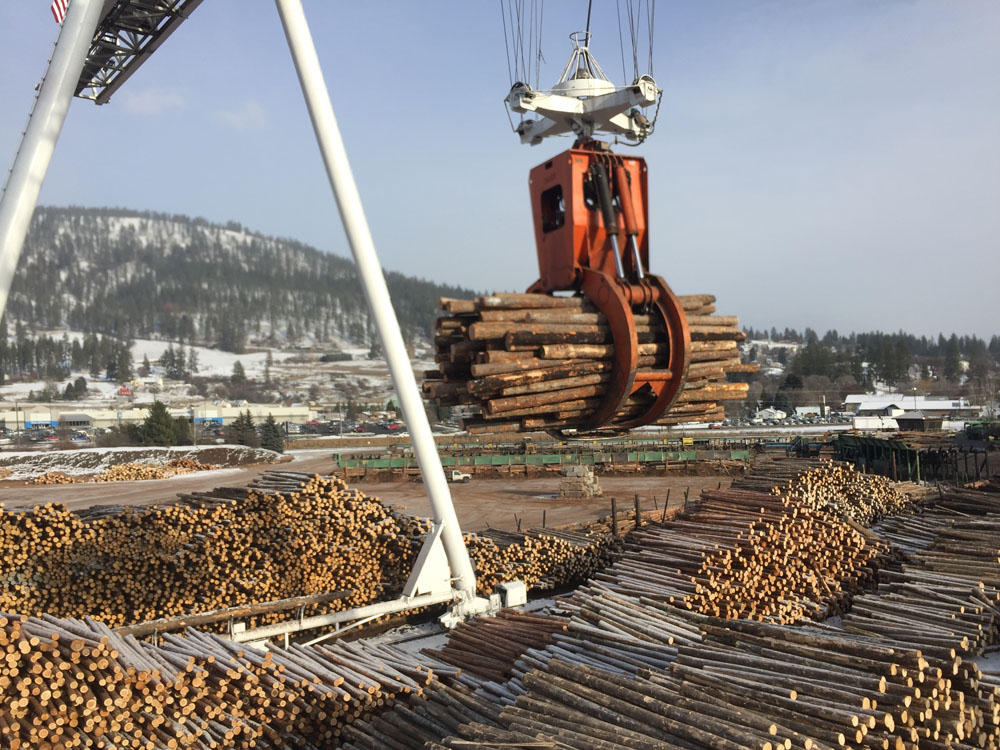
The rainiest fall on record in parts of eastern Oregon and Washington was good for keeping late-season wildfires at bay, but torrential rains wreaked havoc on some timber harvesters in the Northwest.
Still, employees at Vaagen Brothers Lumber in Colville, Washington, got lucky.
“We didn’t miss a day because of the wet weather,” said Josh Anderson, timber manager at one of two mills owned by Vaagen Brothers in Pend Oreille County.
Anderson pointed out a nearby tower of stock-piled logs from a wildfire salvage. He said having that much inventory was “abnormal for a fall wet season.”
“We build up inventory for fire season and we build up inventory to get through winter and the spring breakup but not through a fall breakup,” he said.
Instead of things freezing up when they were supposed to this fall, the weather stayed warm and wet, similar to the kind of weather expected when winter gives way to spring.
That stockpile of timber has kept the mill running after roughly 6 inches of rain soaked much of Eastern Washington for most of October and into November.
‘The storms just kept coming’
But no such stockpile exists for the guys who cut and deliver logs for companies like Vaagen Brothers, so Anderson said they weren’t nearly as lucky.
“It impacted our loggers and truckers a lot,” he said. “They bore the biggest part of the brunt and it’s hard for them to make that up.” 00:08
Jim Geisinger, executive vice president of Oregon’s Associated Loggers agreed with that sentiment.
“That’s correct,” he said. “It’s a lost opportunity, because when the weather does clear up, you’re off to your next job or maybe you are going back to finish up the one you got ran off of.”
Geisinger said fall rain in Oregon likely cut industry-wide production there in half.
“The storms just kept coming,” he said. “And so, I would say the impact to our industry is greater than it’s ever been.”
But he isn’t sure how that loss translates into lost dollars or board feet. Those aren’t numbers Washington’s Forest Protection Association keeps track of either.
“You know, when I say we lost 50 percent of the production, I think you can say that that percentage ripples through the entire supply chain in our industry,” Geisinger said.
A boost for loggers
For now, the rain has stopped and early in December, warmer than normal weather gave way to frigid temperatures that some parts of the region haven’t seen since 2014. Geisinger said cold combined with recent snowfall could be good for loggers in both eastern Oregon and Washington.
“Over on the east side, loggers like to have a few feet of snow on the ground and to have the ground frozen to do their logging,” he said.
It’s easier for logging trucks to transport heavy logs on frozen roads and frozen ground limits problems caused by erosion.
On the flipside though, single digit temperatures are tough on the many blades and moving parts back at the sawmill.
